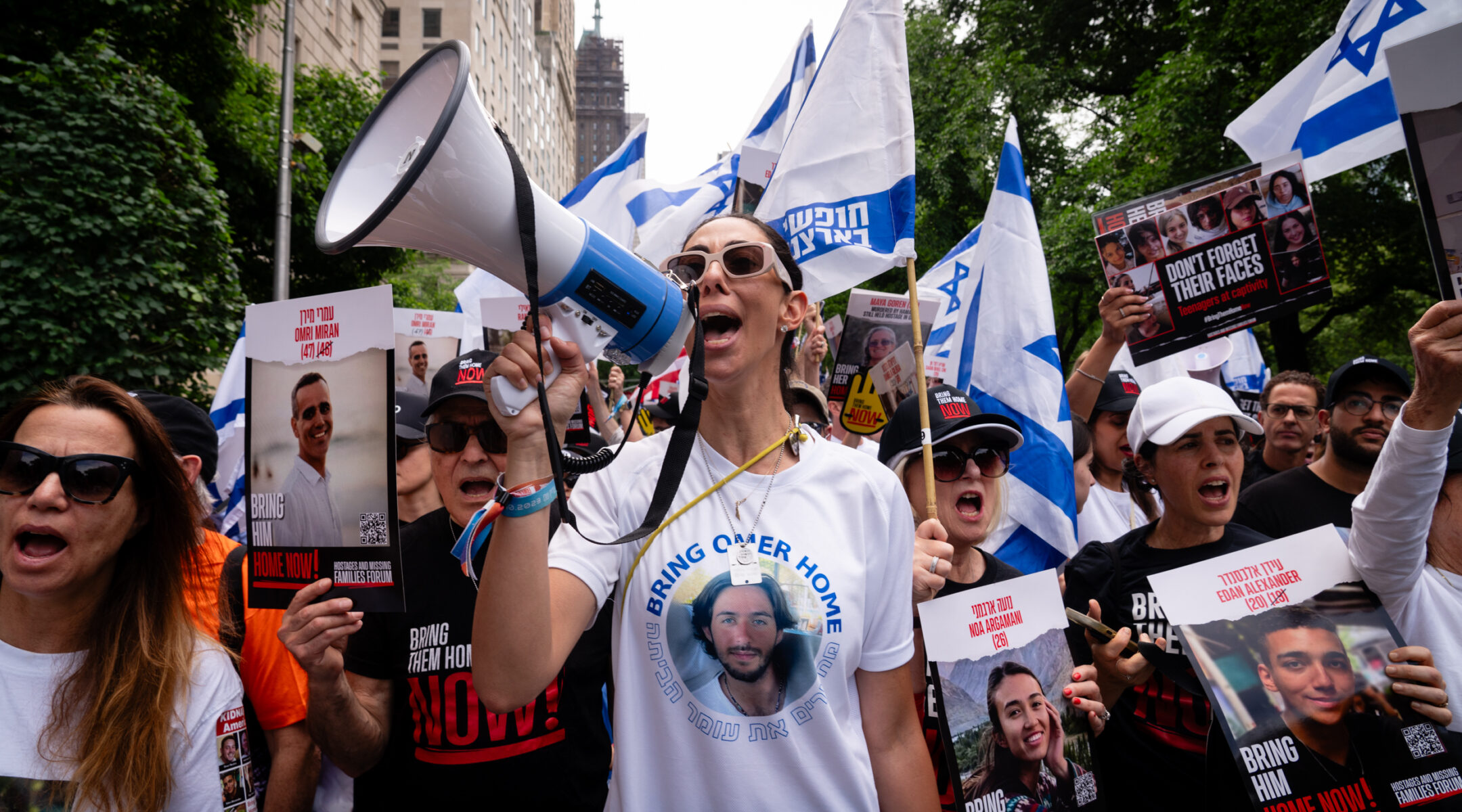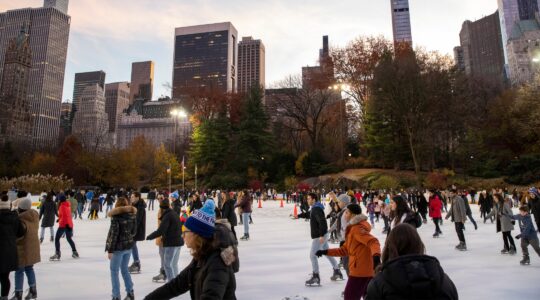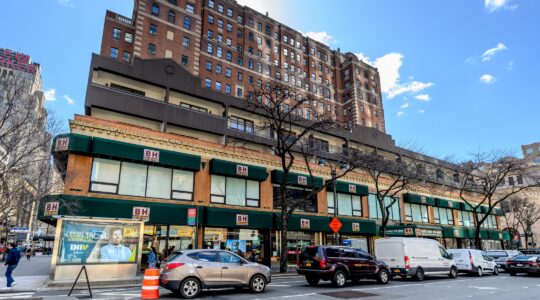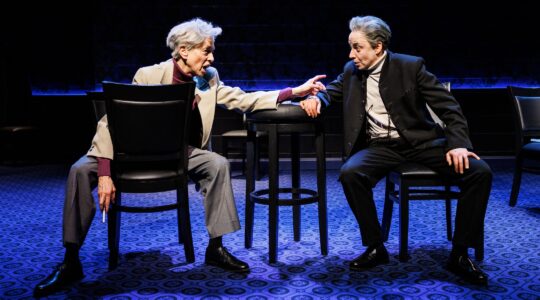Families of hostages held captive in Gaza led tens of thousands of marchers up Fifth Avenue in an Israel parade that mixed festivity and pathos amid heavy security on Sunday.
Much of this year’s edition of the annual march maintained its festive atmosphere, but it was focused on the more than 120 hostages still held by Hamas, with marchers throughout the parade chanting “Bring them home” and carrying signs with photos of those held captive.
A delegation from Kibbutz Be’eri, one of the communities hit hardest in Hamas’ Oct. 7 invasion of Israel, was among the leaders of the parade. Four members of the kibbutz are believed to be alive in captivity, with another seven bodies still being held. Others were released during a ceasefire in November.
“We are coming here to raise our voice,” said Or Gat, whose sister, Carmel Gat, is a hostage. Their mother, Kinneret Gat, was murdered on Oct. 7.
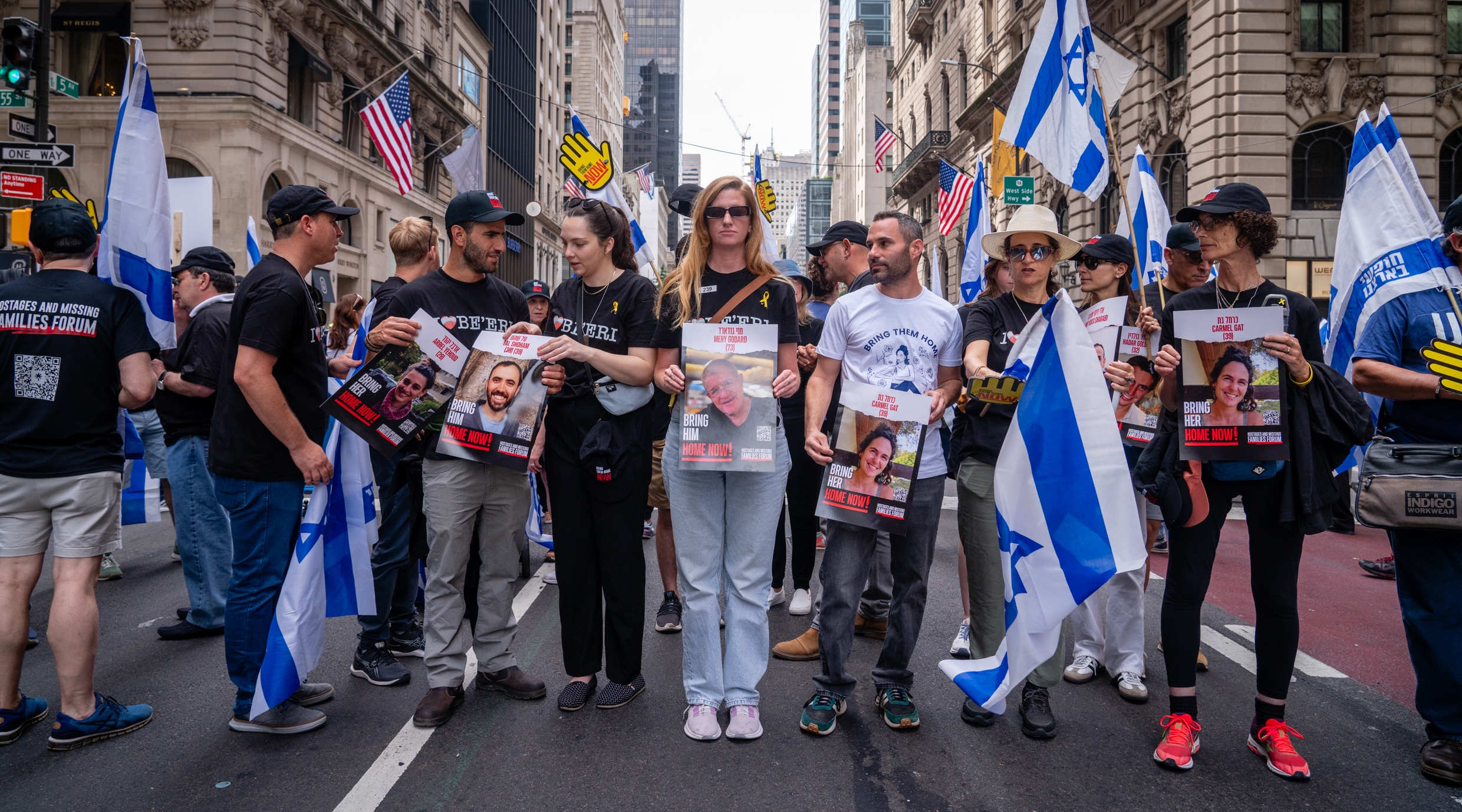
A delegation from Kibbutz Be’eri, one of the communities hardest hit in the Oct. 7 invasion of Israel, at the annual Israel parade in New York City, June 2, 2024. (Luke Tress)
Gat said the group of 12 Be’eri residents at the parade aimed to present the Israeli side of the nearly eight-month-old conflict to the American public. After the parade, the group will travel around the United States and Canada for 10 days to raise awareness of the hostages and speak about Hamas, which, in Gat’s words, is “a terror organization that’s controlling Gaza and is the one that most hurts the Palestinian people.”
Gat told the New York Jewish Week, “We need to raise our heads right now for Israel, for the Jewish people, so that they will see our side.”
The parade — an annual event to celebrate Israel that generally draws tens of thousands between its participants and spectators — underwent changes this year in light of the Oct. 7 attack and ongoing subsequent war, which has been accompanied by a rise in antisemitism in New York City and across the United States. The biggest change was the focus on hostages, and although music still played from the parade floats, organizers told the New York Jewish Week that it requested that participants avoid bringing bands this year. Security was also beefed up, with a heightened police presence and expanded barricades. The event is organized by the Jewish Community Relations Council of New York and the UJA-Federation of New York.
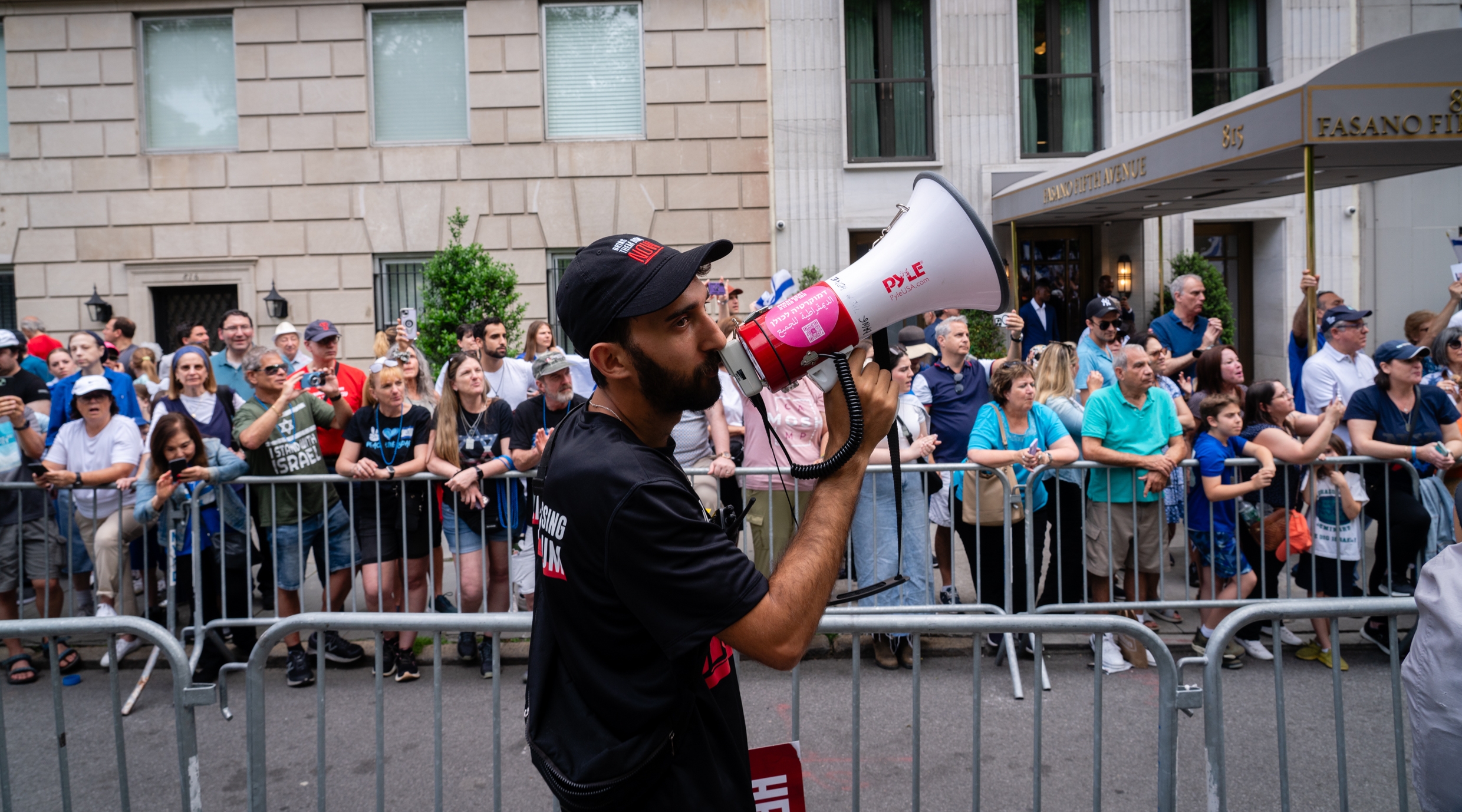
Marchers call for the release of hostages in Gaza at the annual Israel parade in New York City, June 2, 2024. (Luke Tress)
Alongside the attention on the hostages, groups of students from regional Jewish schools danced and sang along to Israeli pop songs by Omer Adam and Eden Ben Zaken as they have in past years. Many wore yellow ribbons and dog tags associated with the campaign for the captives’ return. Some spectators cried when the hostage families walked past, and stickers supporting the captives were plastered on fences and light posts along the parade route.
Along with the contingents from regional Jewish schools, the parade featured New York and Israeli officials.
New York Gov. Kathy Hochul, Attorney General Letitia James and Jewish members of the New York City Council marched in the parade, in addition to Mayor Eric Adams. New York Rep. Ritchie Torres, one of Israel’s staunchest supporters in Congress, marched with a delegation from SAR Academy, a Bronx Jewish day school in his district.
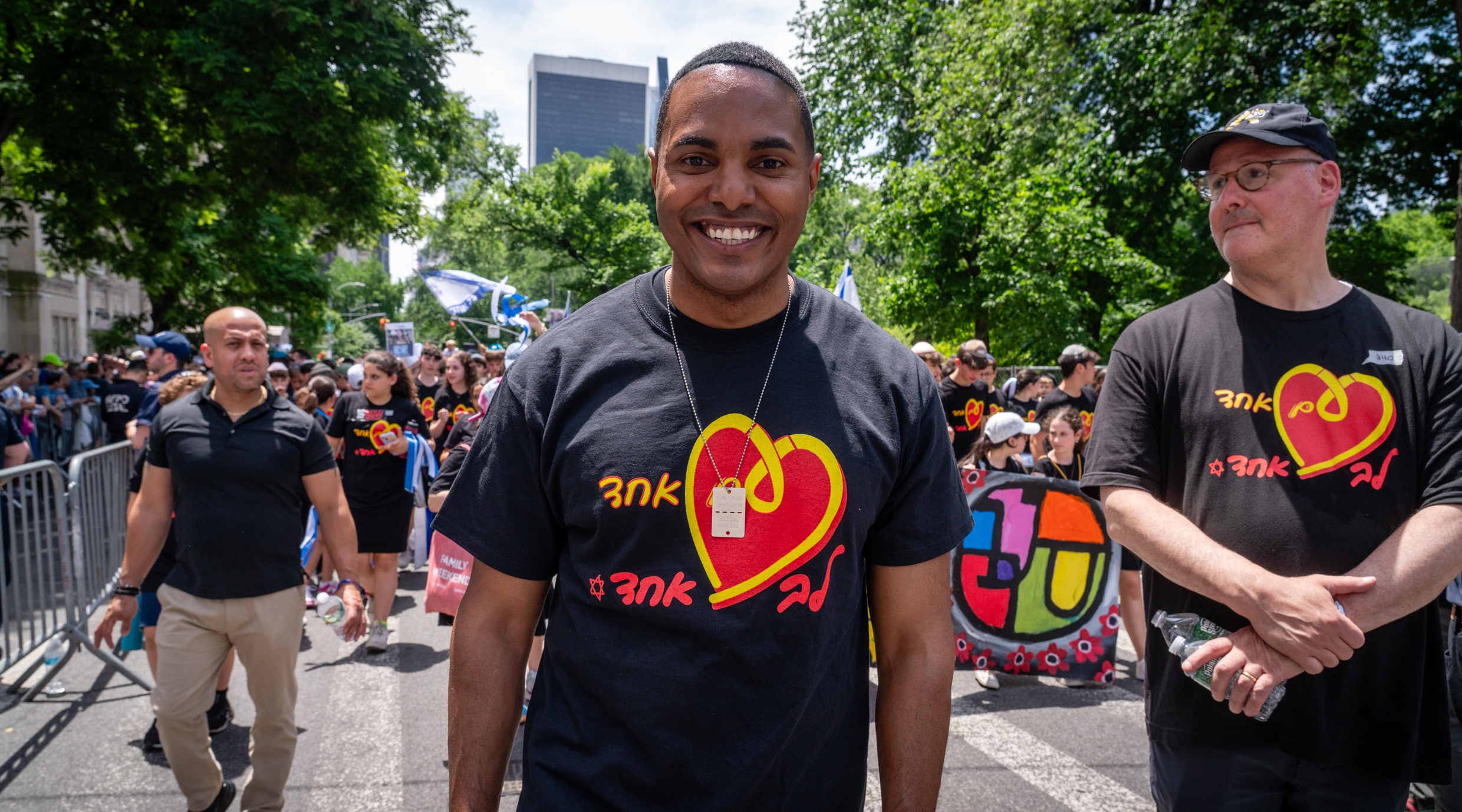
Rep. Ritchie Torres of New York marches with SAR Academy, a Jewish school in his district, in the Israel parade in New York City, June 2, 2024. (Luke Tress)
Israeli leaders at the parade included Foreign Minister Israel Katz, outgoing U.N. Ambassador Gilad Erdan, New York’s new Israeli Consul General Ofir Akunis, lawmaker Boaz Bismuth of Prime Minister Benjamin Netanyahu’s Likud Party, and Shirly Pinto and Yifat Shasha-Biton of the centrist National Unity party. Former Israeli Prime Minister Naftali Bennett marched with a group of college students organized by Hillel.
Israeli pop star Eden Golan, who drew adulation from Israelis and their supporters for her fifth-place finish in the recent Eurovision song contest, marched alongside Adams and posed for photos with enthusiastic fans.
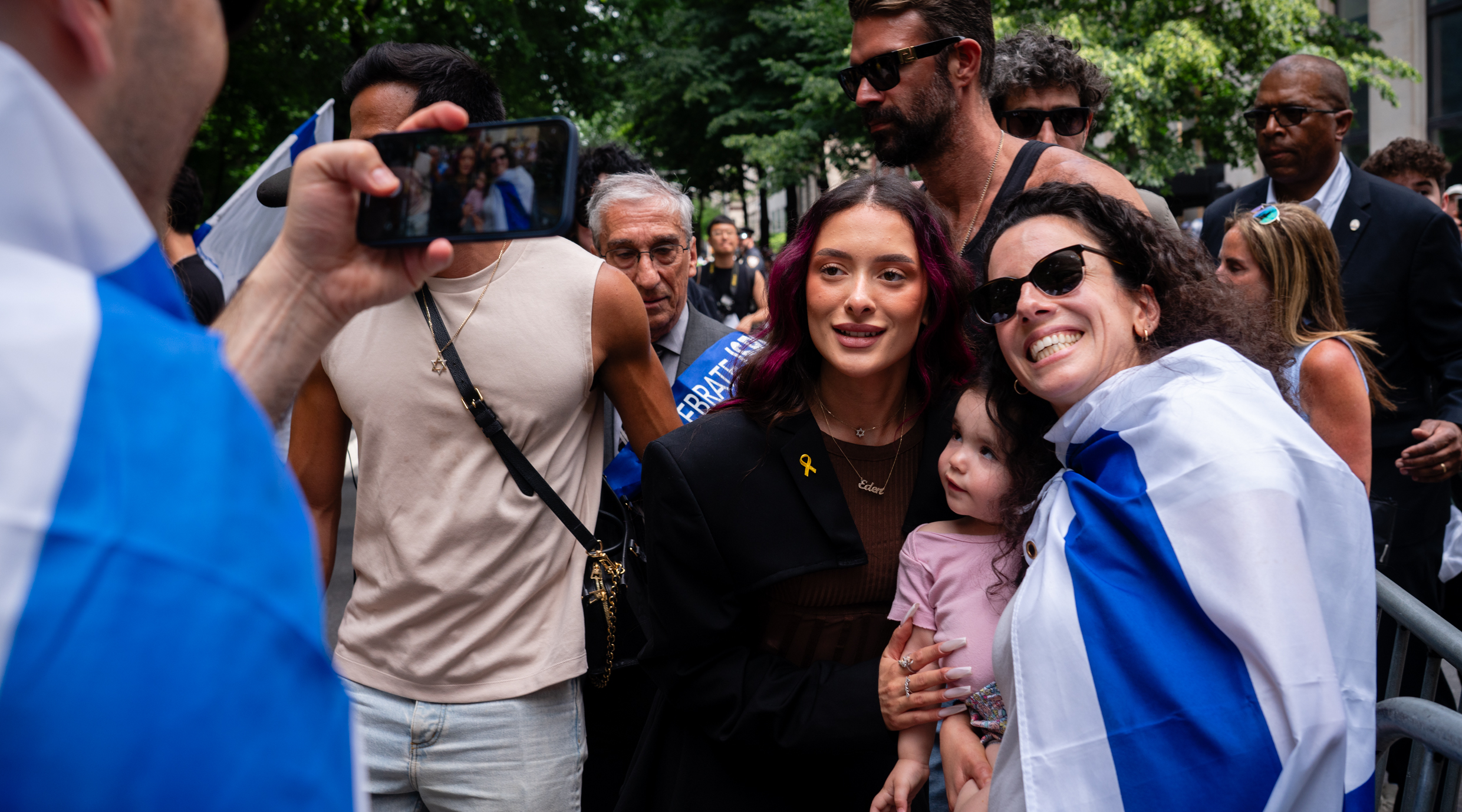
Israeli pop star Eden Golan (center) poses with fans at the annual Israel parade in New York City, June 2, 2024. (Luke Tress)
There was heavy police security around the event, with helicopters and drones overhead, and ahead of the march, law enforcement warned protesters against disrupting the march.
That warning appeared to be heeded. Despite some fears of disruption, and though pro-Palestinian protests have occurred frequently across the city since Oct. 7, there was no sign of pro-Palestinian demonstrators along the parade route. In previous years, a small group of protesters would gather in a space designated by police around 58th Street.
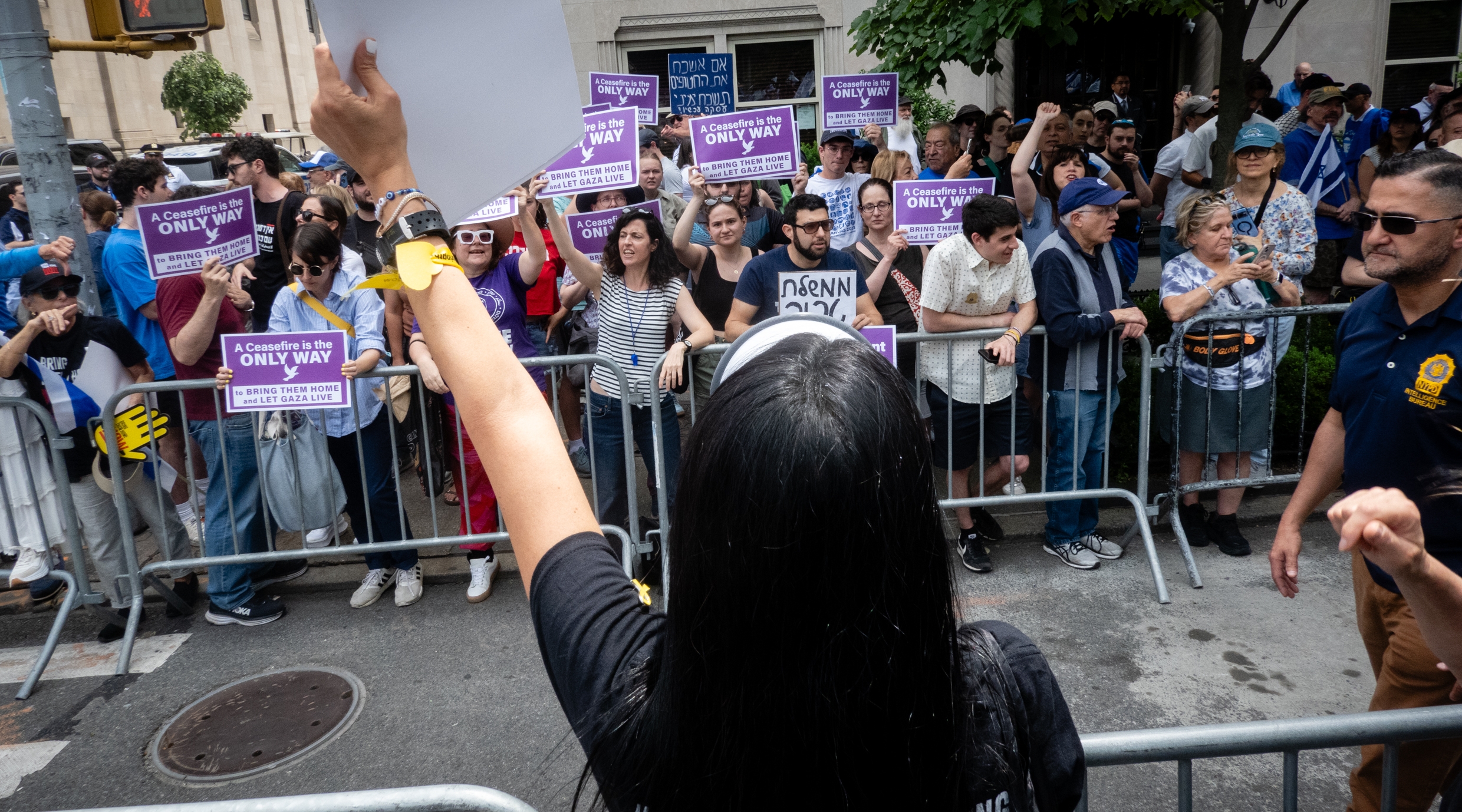
Marchers in New York’s annual Israel parade shout at left-wing Israeli demonstrators calling for a ceasefire, June 2, 2024. (Luke Tress)
The parade was staged days after President Joe Biden announced an Israeli proposal for a ceasefire deal, and the most noticeable protesters were an Israeli-led group of around a dozen people who chanted on the sidelines for a ceasefire, getting into a back-and-forth shouting match with some of the marchers. Katz, a member of Likud, was heckled with shouts of “Shame.” Some Israelis in New York, like a protest movement within Israel, have criticized the government for failing to protect its citizens on Oct. 7 and for not yet securing the release of the hostages.
The parade featured a wide array of New York Jewish groups, with delegations from most major Jewish organizations, as well as smaller contingents representing medical professionals, LGBTQ Jews, Bukharian and Russian-speaking Jews and a motorcycle club.
Gat said he was surprised and moved by the show of support from the New York Jewish community.
“I hope it will make a difference,” he said. “We want everyone to be with us, to save the hostages and to have peace in the Middle East, eventually.”
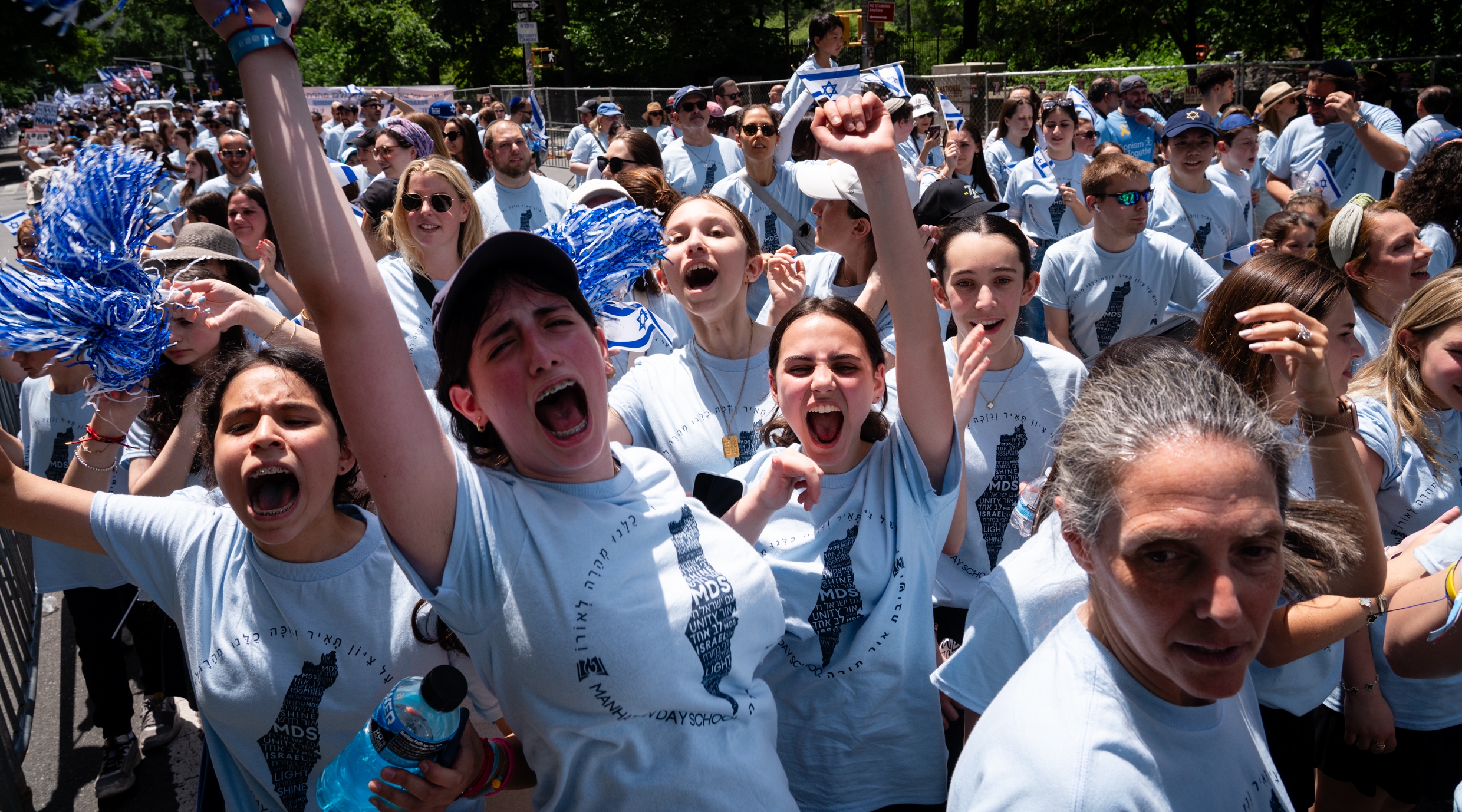
Jewish school students at the Israel parade in New York City, June 2, 2024. (Luke Tress)
The New York Jewish Week brings you the stories behind the headlines, keeping you connected to Jewish life in New York. Help sustain the reporting you trust by donating today.
